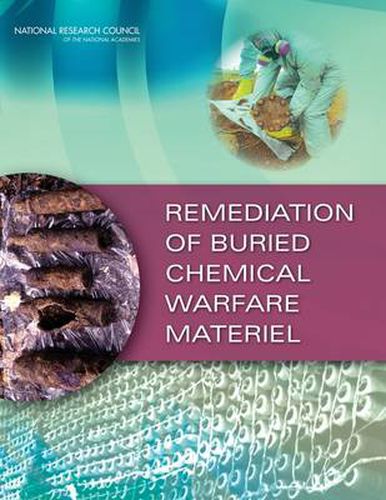Readings Newsletter
Become a Readings Member to make your shopping experience even easier.
Sign in or sign up for free!
You’re not far away from qualifying for FREE standard shipping within Australia
You’ve qualified for FREE standard shipping within Australia
The cart is loading…






As the result of disposal practices from the early to mid-twentieth century, approximately 250 sites in 40 states, the District of Columbia, and 3 territories are known or suspected to have buried chemical warfare materiel (CWM). Much of this CWM is likely to occur in the form of small finds that necessitate the continuation of the Army’s capability to transport treatment systems to disposal locations for destruction. Of greatest concern for the future are sites in residential areas and large sites on legacy military installations. The Army mission regarding the remediation of recovered chemical warfare materiel (RCWM) is turning into a program much larger than the existing munition and hazardous substance cleanup programs. The Army asked the Nation Research Council (NRC) to examine this evolving mission in part because this change is significant and becoming even more prominent as the stockpile destruction is nearing completion. One focus in this report is the current and future status of the Non-Stockpile Chemical Material Project (NSCMP), which now plays a central role in the remediation of recovered chemical warfare materiel and which reports to the Chemical Materials Agency. Remediation of Buried Chemical Warfare Materiel also reviews current supporting technologies for cleanup of CWM sites and surveys organizations involved with remediation of suspected CWM disposal sites to determine current practices and coordination. In this report, potential deficiencies in operational areas based on the review of current supporting technologies for cleanup of CWM sites and develop options for targeted research and development efforts to mitigate potential problem areas are identified.
$9.00 standard shipping within Australia
FREE standard shipping within Australia for orders over $100.00
Express & International shipping calculated at checkout
As the result of disposal practices from the early to mid-twentieth century, approximately 250 sites in 40 states, the District of Columbia, and 3 territories are known or suspected to have buried chemical warfare materiel (CWM). Much of this CWM is likely to occur in the form of small finds that necessitate the continuation of the Army’s capability to transport treatment systems to disposal locations for destruction. Of greatest concern for the future are sites in residential areas and large sites on legacy military installations. The Army mission regarding the remediation of recovered chemical warfare materiel (RCWM) is turning into a program much larger than the existing munition and hazardous substance cleanup programs. The Army asked the Nation Research Council (NRC) to examine this evolving mission in part because this change is significant and becoming even more prominent as the stockpile destruction is nearing completion. One focus in this report is the current and future status of the Non-Stockpile Chemical Material Project (NSCMP), which now plays a central role in the remediation of recovered chemical warfare materiel and which reports to the Chemical Materials Agency. Remediation of Buried Chemical Warfare Materiel also reviews current supporting technologies for cleanup of CWM sites and surveys organizations involved with remediation of suspected CWM disposal sites to determine current practices and coordination. In this report, potential deficiencies in operational areas based on the review of current supporting technologies for cleanup of CWM sites and develop options for targeted research and development efforts to mitigate potential problem areas are identified.